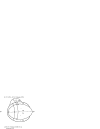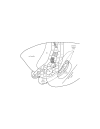The future of mapping sensory cortex in primates: three of many remaining issues
- PMID: 15937006
- PMCID: PMC1569483
- DOI: 10.1098/rstb.2005.1624
The future of mapping sensory cortex in primates: three of many remaining issues
Abstract
After 100 years of progress in understanding the organization of cerebral cortex, three issues have persisted over the last 35 years, which are revisited in this paper. First, is V3 an established or questionable area of visual cortex? Second, does taste cortex include part of area 3b (S1 proper) and other somatosensory areas? Third, is primary auditory cortex, A1, of primates the homologue of A1 in cats? The existence of such questions about even the early stages of cortical processing reflects the difficulties in mapping cerebral cortex, and reminds us that the era of basic discovery is far from over.
Figures



Similar articles
-
[Multiple sensory projections in the dolphin cerebral cortex].Zh Vyssh Nerv Deiat Im I P Pavlova. 1978 Sep-Oct;28(5):1047-53. Zh Vyssh Nerv Deiat Im I P Pavlova. 1978. PMID: 716593 Russian.
-
[Localization of the sensory projection areas in the cerebral cortex of the dolphin, Tursiops truncatus].Zh Evol Biokhim Fiziol. 1977 Nov-Dec;13(6):712-8. Zh Evol Biokhim Fiziol. 1977. PMID: 602532 Russian.
-
Auditory processing in primate cerebral cortex.Curr Opin Neurobiol. 1999 Apr;9(2):164-70. doi: 10.1016/s0959-4388(99)80022-1. Curr Opin Neurobiol. 1999. PMID: 10322185 Review.
-
Hearing taste and colouring text.Lancet Neurol. 2005 May;4(5):274. doi: 10.1016/s1474-4422(05)70062-4. Lancet Neurol. 2005. PMID: 15861554 No abstract available.
-
Auditory processing and hemispheric specialization in non-human primates.Cortex. 2006 Jan;42(1):87-9. doi: 10.1016/s0010-9452(08)70325-3. Cortex. 2006. PMID: 16509112 Review. No abstract available.
Cited by
-
Increased Subjective Distaste and Altered Insula Activity to Umami Tastant in Patients with Bulimia Nervosa.Front Psychiatry. 2017 Sep 25;8:172. doi: 10.3389/fpsyt.2017.00172. eCollection 2017. Front Psychiatry. 2017. PMID: 28993739 Free PMC article.
-
A Web-Based Atlas Combining MRI and Histology of the Squirrel Monkey Brain.Neuroinformatics. 2019 Jan;17(1):131-145. doi: 10.1007/s12021-018-9391-z. Neuroinformatics. 2019. PMID: 30006920 Free PMC article.
-
Introduction: cerebral cartography 1905-2005.Philos Trans R Soc Lond B Biol Sci. 2005 Apr 29;360(1456):651-2. doi: 10.1098/rstb.2005.1632. Philos Trans R Soc Lond B Biol Sci. 2005. PMID: 15937005 Free PMC article. No abstract available.
-
The representation of oral fat texture in the human somatosensory cortex.Hum Brain Mapp. 2014 Jun;35(6):2521-30. doi: 10.1002/hbm.22346. Epub 2013 Sep 3. Hum Brain Mapp. 2014. PMID: 24038614 Free PMC article.
-
Interconnected sub-networks of the macaque monkey gustatory connectome.Front Neurosci. 2023 Feb 16;16:818800. doi: 10.3389/fnins.2022.818800. eCollection 2022. Front Neurosci. 2023. PMID: 36874640 Free PMC article.
References
-
- Allman J.M, Kaas J.H. Representation of the visual field in striate and adjoining cortex of the owl monkey (Aotus trivirgatus) Brain Res. 1971;35:89–106. - PubMed
-
- Allman J.M, Kaas J.H. The organization of the second visual area (VII) in the owl monkey: a second order transformation of the visual hemifield. Brain Res. 1974;76:247–265. - PubMed
-
- Allman J.M, Kaas J.H. Representation of the visual field on the medial wall of occipital–parietal cortex in the owl monkey. Science. 1976;191:572–575. - PubMed
-
- Beck P.D, Kaas J.H. Cortical connections of the dorsomedial visual area in old world macaque monkeys. J. Comp. Neurol. 1999;406:487–502. - PubMed
-
- Benjamin R.M, Burton H. Projection of taste nerve afferents to anterior opercular–insular cortex in squirrel monkey (Saimiri sciureus) Brain Res. 1968;7:221–231. - PubMed
Publication types
MeSH terms
Grants and funding
LinkOut - more resources
Full Text Sources
Miscellaneous

